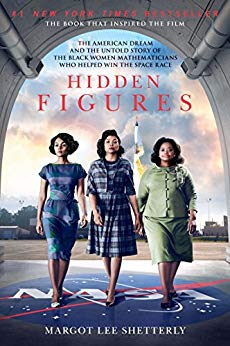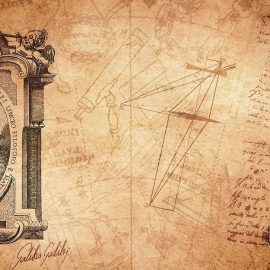

This article is an excerpt from the Shortform summary of "Hidden Figures" by Margot Lee Shetterly. Shortform has the world's best summaries of books you should be reading.
Like this article? Sign up for a free trial here .
What is Langley Aeronautical Memorial Laboratory, and what is its significance?
In Hidden Figures, Langley is the workplace of Katherine Johnson, Dorothy Vaughan, and Mary Jackson, the three women who are credited with helping break through color barriers in science, and who made substantial contributions to space exploration and science. Read about Langley Aeronautical Memorial Laboratory and the experiences of the women in Hidden Figures.
Langley Aeronautical Memorial Laboratory: The Site of Success
Hidden Figures: The Story of the African-American Women Who Helped Win the Space Race tells the story of a group of African-American women who, over a period of over 25 years, made major contributions to the US space program during its golden age. Overcoming racist and sexist discrimination, these women established themselves as brilliant mathematicians and engineers and helped lead the United States to victory in some of the pivotal moments of the Cold War-era space race—including John Glenn’s 1962 orbit of the Earth and the 1969 Apollo 11 moon landing.
The scene of their success was the Langley Memorial Aeronautical Laboratory. Where is Langley? Langley is located in the Hampton Roads region of Virginia. It was here, in the heartland of American segregation, that a group of extraordinary women, including Dorothy Vaughan, Mary Jackson, and Katherine Johnson, helped their country break through the color barrier and leap into the great unknown. But what is Langley?
Langley: A Brief History
During World War Two, the gradual dismantling of the Jim Crow system of racial segregation began, as the demands of the war economy brought African-Americans and women into jobs and industries from which they had previously been excluded. This was especially true of the aeronautics and defense industry, which was crucial to the American war effort.
The demands of the war economy brought African-Americans and women into jobs and industries from which they had previously been excluded. This was an important factor in breaking down racial apartheid all across the country, as African-Americans refused to accept second-class citizenship in a nation for which they had served, fought, and even died. It was in this context that a pioneering generation of black women first began to break down the color bar at the Langley Memorial Aeronautical Laboratory in Hampton, Virginia.
Facilities like Langley began to hire qualified women in large numbers to work as mathematicians and number-crunchers. Aeronautics was an intensely quantitative field: designing and testing combat planes produced a deluge of numerical data that needed to be processed and analyzed. And that meant hiring an army of number-crunchers (“computers” as they were known at the time).
Under pressure from African-American civil rights leaders, the Roosevelt Administration took steps to desegregate the industry and open up defense jobs to black female applicants as well. This enabled the first generation of black female professionals to get in the door at Langley. The opportunity for a black person to work as a computer in an aeronautical laboratory (and not as a janitor or cafeteria worker) was something altogether new and extraordinary. In spring 1943, Dorothy Vaughan, a schoolteacher from Virginia, filled out her application. In the fall, she received her answer: she was hired to work as a Grade P-1 Mathematician at Langley for the duration of the war. It was a position that would last over 30 years.
Langley During the Cold War
While much of the nation did, in fact, witness a downscaling of the defense industry, this was not the case in Hampton Roads. While the rest of wartime production changed, people were also asking, what is Langley and its role in the new world? As the Cold War with the Soviet Union began to take shape following World War Two, Southern Virginia was set to become a critical hub of the nation’s defense industry. The Norfolk Naval Base became the command center of the Atlantic Fleet, while the US Army designated Langley Field as the headquarters of its Tactical Air Command (later to become an independent branch of the military: The United States Air Force).
Thus, although some women who had been hired during the war did end up leaving Langley Aeronautical Memorial Laboratory, this was usually due to personal choice rather than being forced out of their positions. Most of the West Computers ended up receiving permanent offers of employment, as Dorothy did in 1946, when she was made a permanent Civil Service employee.
The new strategic importance of the region meant that the boom economy would continue. With new bases, there would be new needs for military contractors to supply them. Defense industry money poured into Hampton Roads, bringing new jobs, new migrants, and new transformations. During the Korean War (1950-1953) alone, NACA presented a proposal to Congress to double its staff from 7,000 to 14,000.
Challenges at Langley
For the women of Hidden Figures, Langley meant a myriad of challenges as they completed their important work at Langley Memorial Aeronautical Library. Two of the main challenges the women faced were sexism and racism. For much of their time there, Langley was segregated due to Jim Crow laws. The women fought to overcome these challenges.
Sexism
Of course, the women of West Computing faced a double barrier to their upward mobility, being both female and black. Segregation had isolated them from their colleagues and from many opportunities. The all-white East Computing unit was shuttered after the war—many of the white women had won new positions in specialized units, plus the changing nature of the work at Langley reduced the need for a general computing pool. All remaining general computing work was transferred to West Computing, many Langley Aeronautical Memorial Laboratory employees hadn’t even known that there was an all-black computing unit.
But the integration of the computing functions at Langley was a watershed moment at the laboratory and opened new doors to the black women who worked there. In 1946, a unit conducting stability analysis research integrated a former West Computer, Dorothy Hoover, into its group full-time. In 1951, Dorothy Hoover would co-publish a report on a new wing-design for airplanes, contributing to one of Langley’s major breakthroughs from this era. She eventually went on to a prestigious academic career in mathematics at Arkansas AM&N. Her achievement was followed by others, as more West Computers moved to specialized divisions.
Dorothy Vaughan rapidly ascended the ranks at Langley. As more and more women were hired at the now-integrated West Computing to replace those who had been reassigned to specialized divisions, she transitioned into a managerial role. In 1949, the laboratory director appointed her head of West Computing, a position she would hold for the next decade.
Segregation
White women (former East Area Computers) oversaw the West Computers, parceling out tasks to the various section heads, who in turn subdivided the work among the women in their section of the computing pool. What the women of West Computing were usually working on was a portion of a larger task, some quick piece of calculation that an engineer required for a bigger project.
According to Hidden Figures, Langley was a place where colleagues worked closely with one another (often literally close, thanks to the wartime hiring spree) and clerks and computers might rub shoulders with top aeronautics researchers. Yet, because of the color of their skin, the West Area Computers were largely excluded from this collegial atmosphere. Although Executive Order 8802 had mandated fair employment in the defense industry, Langley’s location in the Commonwealth of Virginia forced it to comply with that state’s segregation statutes.
This was symbolized most hurtfully by the sign on the table where they sat at the back of the cafeteria that read, “COLORED COMPUTERS.” Although they were ostensibly professionals on par with their colleagues at Langley, they were still treated as something less than equal.
Seeing this sign every day was deeply insulting and offensive for the West Computers. One day, a West Computer named Miriam Mann could take it no more. She walked over to the sign, removed it, and stuffed it into her purse.
This prompted a mini struggle for equal treatment within Langley Aeronautical Memorial Laboratory. The sign was back up a few days later, prompting Miriam to take it down once again. This back-and-forth played out over the course of weeks, but Miriam and her fellow computers were determined to take a stand against this small, but potent symbol of oppression. Her husband warned her that she might lose her job over this act of defiance, but Miriam knew that this was a battle that needed to be fought.
Eventually, she won. One day, the sign went into Miriam’s purse and no one ever bothered to replace it. This was a powerful victory, one that helped to convince her fellow women of West Computing that the laboratory was theirs as well. Dorothy, Miriam, and the other black computers had become more than colleagues—they had become a tight-knit band, an army in its own right that was prepared to fight and win the war for equality at home.
NASA Goes to Houston
With the expanded scope of NASA’s mission, the influx of new personnel and funding, and the enormous public attention on the agency’s activities, American policymakers began to see that NASA was getting too big for Hampton Roads and Langley Aeronautical Memorial Laboratory. The government explored options for a new base of operations, one which would have the right mix of warm climate, cheap land, and friendly politicians.
With much influence and lobbying from Vice President Lyndon Johnson (a Texan who had deep political connections from his time as Senate Majority Leader and would soon be president himself after Kennedy’s assassination), NASA decided to move the bulk of its space operations to Houston. This meant that the men and women of Langley would face difficult personal and professional decisions.
NASA’s operations got too large for Langley Memorial Aeronautical Laboratory, and moved on to their iconic Houston location. NASA went on to achieve incredible feats in space exploration, due in large part to the women who first joined their ranks at Langley.

———End of Preview———
Like what you just read? Read the rest of the world's best summary of Margot Lee Shetterly's "Hidden Figures" at Shortform .
Here's what you'll find in our full Hidden Figures summary :
- How brave black women were instrumental to the American space race
- How they confronted racism and sexism to forge a better future
- Their enduring legacy in American history






